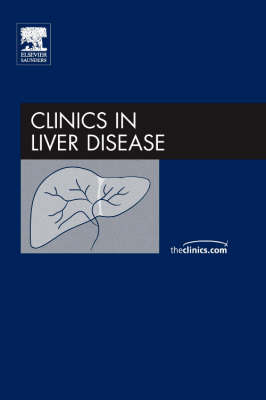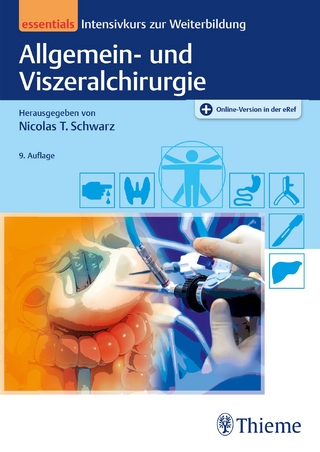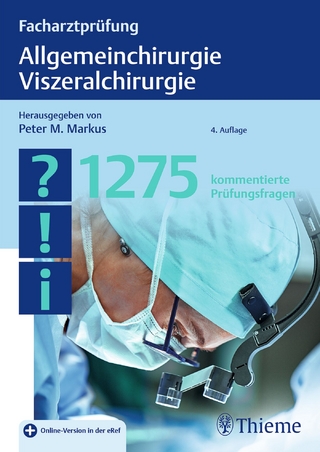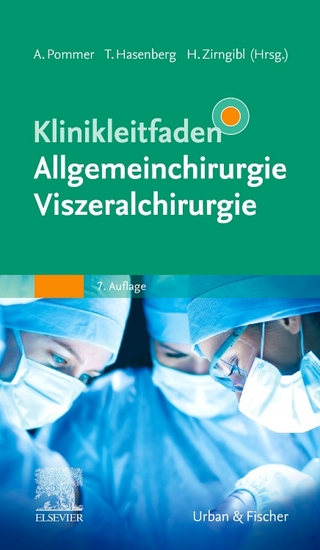
Liver Transplantation
An Issue of Clinics in Liver Disease
Seiten
2007
Saunders (Verlag)
978-1-4160-4290-7 (ISBN)
Saunders (Verlag)
978-1-4160-4290-7 (ISBN)
- Titel ist leider vergriffen;
keine Neuauflage - Artikel merken
Despite advances in the management of liver disease with effective therapies, most patients with decompensated cirrhosis, unresectable hepatocellular carcinoma, or fulminant hepatic failure have no prospect for long-term survival short of liver transplantation. Liver transplantation is a changing field and this book reflects these changes.
Despite major advances in the management of liver disease with increasingly effective therapies (for instance in chronic viral hepatitis), most patients with decompensated cirrhosis, unresectable hepatocellular carcinoma, or fulminant hepatic failure have no prospect for long-term survival short of liver transplantation. As the art and science of liver transplantation have matured the challenges have changed, although the shortage of deceased donor organs overshadows all our efforts. Introduction of the model for endstage liver disease has had a profound effect on organ allocation facilitating more equitable distribution of this scarce resource. Rejection is now fortunately rarely a threat to graft viability as our immunosuppressive options have expanded. Recurrent disease is the major concern impacting survival beyond the early postoperative period. Again the type of recurrent disease has changed. Fifteen years ago recurrence of hepatitis B virus infection was frequently fatal following liver transplant for this indication.
With the initial use of long-term hepatitis B immuneglogulin monotherapy and then combination therapy with lamivudine, recurrent hepatitis B has become an unusual event. Hepatitis C now is the major form of recurrent disease. The underlying diagnoses in liver candidates have also shifted with recognition of non-alcoholic fatty liver disease as a major cause of liver disease, including cirrhosis and hepatocellular carcinoma; we are beginning to appreciate that this form of liver disease can also recur in the graft. Some prior contraindications to liver transplant, like HIV infection, are being revisited because of improvement in antiretroviral therapy or in the case of cholangiocarcinoma because of new treatment approaches to reduce tumor recurrence. Hepatocellular carcinoma is already well established and a characterized indication for transplant. With the growing number of long-term liver transplant recipients, it has become apparent that meticulous medical care is essential to avoid complications from comorbidities such as poorly controlled diabetes mellitus and systemic hypertension.
In the transplant candidate, there is increasing interest in preempting complications such as variceal hemorrhage by offering prophylaxis after screening for varices. Liver transplantation continues to be a dynamic and rapidly changing field and this issue of the "Clinics" reflects these changes.
Despite major advances in the management of liver disease with increasingly effective therapies (for instance in chronic viral hepatitis), most patients with decompensated cirrhosis, unresectable hepatocellular carcinoma, or fulminant hepatic failure have no prospect for long-term survival short of liver transplantation. As the art and science of liver transplantation have matured the challenges have changed, although the shortage of deceased donor organs overshadows all our efforts. Introduction of the model for endstage liver disease has had a profound effect on organ allocation facilitating more equitable distribution of this scarce resource. Rejection is now fortunately rarely a threat to graft viability as our immunosuppressive options have expanded. Recurrent disease is the major concern impacting survival beyond the early postoperative period. Again the type of recurrent disease has changed. Fifteen years ago recurrence of hepatitis B virus infection was frequently fatal following liver transplant for this indication.
With the initial use of long-term hepatitis B immuneglogulin monotherapy and then combination therapy with lamivudine, recurrent hepatitis B has become an unusual event. Hepatitis C now is the major form of recurrent disease. The underlying diagnoses in liver candidates have also shifted with recognition of non-alcoholic fatty liver disease as a major cause of liver disease, including cirrhosis and hepatocellular carcinoma; we are beginning to appreciate that this form of liver disease can also recur in the graft. Some prior contraindications to liver transplant, like HIV infection, are being revisited because of improvement in antiretroviral therapy or in the case of cholangiocarcinoma because of new treatment approaches to reduce tumor recurrence. Hepatocellular carcinoma is already well established and a characterized indication for transplant. With the growing number of long-term liver transplant recipients, it has become apparent that meticulous medical care is essential to avoid complications from comorbidities such as poorly controlled diabetes mellitus and systemic hypertension.
In the transplant candidate, there is increasing interest in preempting complications such as variceal hemorrhage by offering prophylaxis after screening for varices. Liver transplantation continues to be a dynamic and rapidly changing field and this issue of the "Clinics" reflects these changes.
| Erscheint lt. Verlag | 2.8.2007 |
|---|---|
| Reihe/Serie | The Clinics: Internal Medicine ; v. 11-2 |
| Zusatzinfo | Illustrations |
| Verlagsort | Philadelphia |
| Sprache | englisch |
| Themenwelt | Medizinische Fachgebiete ► Chirurgie ► Viszeralchirurgie |
| Medizinische Fachgebiete ► Innere Medizin ► Hepatologie | |
| ISBN-10 | 1-4160-4290-3 / 1416042903 |
| ISBN-13 | 978-1-4160-4290-7 / 9781416042907 |
| Zustand | Neuware |
| Haben Sie eine Frage zum Produkt? |
Mehr entdecken
aus dem Bereich
aus dem Bereich
Buch | Softcover (2022)
Urban & Fischer in Elsevier (Verlag)
58,00 €


